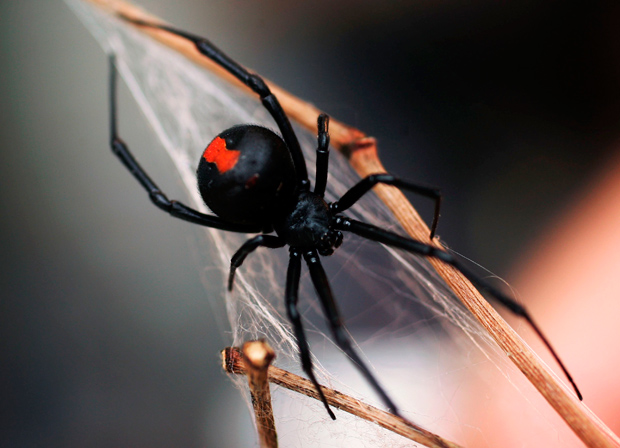Australian Spiders
- Posted in:Admin
- 05/03/18
- 66
Baby spiders are falling from the sky in a town in Australia, according to a local media report. Millions of spiders seemingly dropped from above earlier this month. Afscheid Nemen Bestaat Niet Download Free. Appearance: sydney-funnel-web-spider. Image sourced from 2. Other Funnel-Webs. Forget pizza rat and cigarette crab and prepare yourself for spider mouse, the super strong and very hungry Australian arachnid.


It's true that we have some of the most venomous spiders in the world - but Australia's spider reputation is bigger than its bite: a death in April 2016 was the country's first recorded spider-caused death since 1981. 'The fact is that, from a human perspective, spiders just aren't that dangerous' says Dr Aaron Harmer, arachnid researcher Macquarie University. 'While many spiders can give you a nip, in most cases it is less troublesome than a bee sting.' Spiders less dangerous than bees Spiders are the most widely distributed venomous creatures in Australia, with an estimated 10,000 species inhabiting a variety of ecosystems. Map Of The City Of Los Angeles Zip Code there.
But even though spiders live around us, from our urban centres to the bush, bites are infrequent. 'There are more deaths from allergic reactions to bees' says Dr Geoff Isbister, a researcher specialised in envenoming at the University of Newcastle.
He points out the extent of our irrational fear of spiders: 'While we all still happily get in our cars (about 1000 people die each year in car crashes), then we can't really worry about spiders.' Antivenom for two of our more dangerous spiders, the funnel-web and the redback has been available since the 1950s and 1981, respectively. It is only administered when the envenomation is really severe, which is rarely the case. Spider venom contains a cocktail of chemicals, some of which can be harmful to humans - but humans are not really the intended victims.
Spider venom is designed for small prey and delivered in small quantities that, while often fatal to tiny creatures, can be handled by bigger organisms. When injected to a horse, for instance, spider venom triggers the animal's immune system to produce antibodies to fight the effect of the toxin. AUSTRALIA'S MOST DANGEROUS SPIDERS 1. Sydney funnel-web ( Atrax robustus) With highly toxic venom produced in large amounts and large fangs to inject it, the Sydney funnel-web is without a doubt the deadliest spider in Australia, and possibly the world. Found in New South Wales, in forests as well as populated urban areas, they burrow in humid sheltered places. They can wander in backyards and sometimes fall into swimming pools, and though they're not often encountered, they can be quite aggressive when threatened.
Though just 1.5-3.5cm big, the Sydney Funnel-web has fangs larger than a brown snake's and so powerful they can even pierce through nails and toenails. Their venom has a compound that can attack the human nervous system and alter the functioning of all organs and, when coming from a male, can kill. One in six bites causes a severe reaction, but since the antivenom has been made available, in 1981, no fatalities have been recorded. Other funnel-webs There are about 40 species of funnel-web spiders in Australia, but only six have been reported to cause severe envenomation, with victims generally around southern Queensland and northern New South Wales. The impressive northern tree funnel-web spider, Hadronyche formidabilis, (4-5 cm long) and the smaller southern tree funnel-web spider, H.
Cerbereaprobably count as the most dangerous ones. Half their bites result in severe envenoming. Every year, up to 30-40 people are bitten by funnel-web spiders. But antivenom is available and proved very effective. They feed on prey ranging from beetles to frogs and appear to be generally more active in the warmer months, between November and March. Redback spider ( Latrodectus hasselti) Redback spiders are found throughout Australia, in many habitats, including urban areas. They often hide in dry, sheltered places such as garden sheds, mailboxes and under toilet seats.
Numbers of redback spider bites are uncertain, but about 2000 are reported each year and about 250 people receive antivenom. No deaths have been recorded since redback antivenom became available in the 1950s.
Most serious bites are from the female redback spider, which measures about 1cm long (bigger than males) and is recognisable by the well-known red stripe on its back, from which it gains its name. Their venom affects the nervous system, which is potentially dangerous for humans, but their small fangs make many of the bites ineffective. Envenomation can cause various effects, but the main symptom is severe and persistent pain - which can last hours to days depending on the person's sensitivity to the venom - and may include nausea, malaise and lethargy. Cupboard spiders ( Steatoda sp.) are often mistaken for redbacks and they produce similar symptoms, though their venom is less potent. Redback venom is effective against these bites. Mouse spider ( Missulena sp.) There are eight species of mouse spider found all across Australia and they're typically found in burrows, often near rivers or waterways, and can occasionally be found in suburban areas. Their venom is similar to the funnel-web spiders, although no deaths have been attributed to them; only one case of severe envenomation has been recorded.